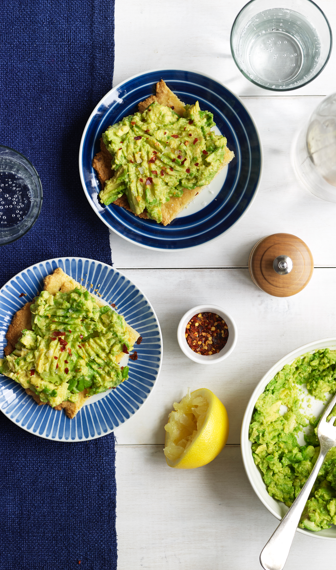
There are plenty of reasons to eat pomegranate. Not only is the juicy red fruit delicious, pomegranate health benefits include anti-inflammatory properties and help prevent Alzheimer’s, heart disease, and cancer.[1] If that’s not reason enough, pomegranates are one of the few fruits in season through fall and winter (which explains why November marks National Pomegranate Month). The reasons why to eat a pomegranate are clear; what’s less clear is how to eat a pomegranate. Keep reading for tips on how to open a pomegranate as well as pomegranate recipe ideas.
How to Open a Pomegranate
The steps to open a pomegranate aren’t as simple as, say, peeling a banana, but with a knife, bowl, and a little bit of patience, you can nail the technique below in no time.
1. Score the Rind. Cutting into a pomegranate can result in broken seeds and a sticky red mess. Instead, take a sharp knife and trace it in a hemisphere around the fruit. Go as deep as you can without cutting past the rind. Feel free to trace one hemisphere or several.
2. Pry the Fruit Open. Use your hands to gently rip the pomegranate apart along the lines you’ve etched. As you do this, hold the fruit above a bowl of water to minimize mess and make step three easier.
3. Separate the Seeds. Take each section and use your hands to gently release the seeds from the rind, allowing them to drop into the bowl of water. Feel free to tap the rind with a spoon to help loosen. Don’t worry if some of the inner white flesh (called the albedo) drops into the bowl: it will float, while the seeds sink, making separating the two easy.
Pomegranate Recipes
Wondering how to prepare pomegranate? Look no further than the pomegranate recipes and ideas below. Just keep in mind that a one-fourth cup serving of the seeds contains 6.4g net carbs and plan your meals accordingly.
● At breakfast: Whip up a superfood smoothie with pomegranate seeds, protein powder, ice, and the milk of your choice.
● For lunch or dinner: Try this Pomegranate, Pecan, and Parsley Salad, which combines juicy pomegranate with crunchy pecans and crisp fresh greens. One serving contains 306 calories and 8.4g net carbs
● As a snack: Sprinkle pomegranate seeds into greek yogurt for a quick and nutritious energy snack. Add chopped almonds for a healthy fat.

